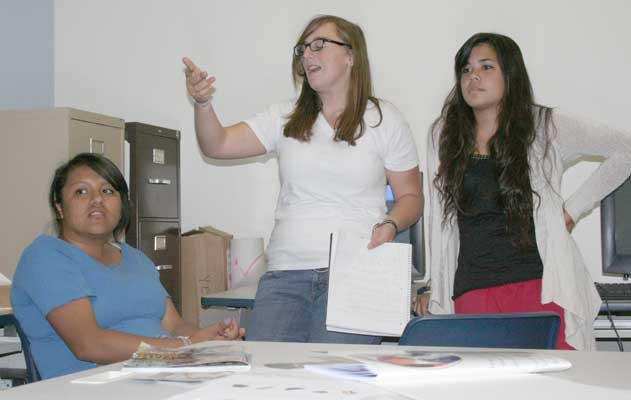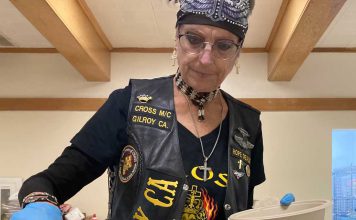From riots to recession, Gilroy High School’s student
journalists cover tough issues with a grace and professionalism
that’s earned them national recognition.
From riots to recession, Gilroy High School’s student journalists cover tough issues with a grace and professionalism that’s earned them national recognition.
Journalism adviser Veronica Andrade burst into tears when she told last year’s Free Press editor-in-chief Jacob Gonzales that a panel of journalists nominated their student-run newspaper for the equivalent of the Pulitzer Prize for high school journalism.
“I was beside myself,” she said. “I still can’t believe it. It’s a really cool high.”
Andrade remembered how she and Gonzales, 18, aimed for the 2009 Pacemaker – a competition co-sponsored by the Newspaper Association of America Foundation – with each of the six editions they published last year. The 339 applicants from across the nation were judged on coverage and content, quality of writing and reporting and layout and design, among other components. Fifty-six finalists, including GHS, will travel to Washington, D.C., this November for the announcement of the Pacemaker winner and an awards ceremony. The school was also a Pacemaker finalist in 2003 and 2004, and won the award in 2003.
In her second year as adviser of Gilroy High’s journalism class, Andrade credited her students’ passion and sensitivity in reporting for the award. Student journalists learned to report on delicate subjects and even faced the occasional censorship issue, even though editors agreed the school administration was generally supportive of the paper.
“One of our photographers had to delete a good photo” at the behest of a campus supervisor during a riot last year, Gonzales said.
Last year’s editions covered an array of local and global issues, including campus riots, high school exit exams, an English teacher accused of slapping a student, the historical 2008 presidential election and the Israeli-Palestinian conflict.
“We wanted to cover the big stories,” Gonzales said, adding that his and Andrade’s goals for taking the paper to the next level meshed seamlessly. “We were on the same page from day one. We wanted (the paper) to become more professional, with not as much focus on sensationalism. We wanted it to be aesthetically pleasing.”
Andrade’s students kick off the school year with a crash course in media ethics, the inverted pyramid news structure, and learning the difference between editorializing and reporting. Andrade treats her students as if they were employees and the journalism computer lab an office. Graded on class participation and punctuality, the journalists hit the pavement after a couple months, armed with notepads and cameras.
“Managing egos” posed the biggest challenge to Gonzales as editor-in-chief, he said. “Some people have a hard time taking direction.”
But the headaches and hassles associated with managing 30 other teenagers was well worth it, he said.
“We put in a lot of hard work,” he said. “I’m proud of my staff.”
Gonzales graduated last spring and left the paper in the hands of co-editors Karalyn Podesta, 17, and Rebekah Valencia, 16, who plan to join Gonzales and Andrade in D.C. The pair, complete with their opposing views on a variety of issues, plans to ignite the opinions page this year.
“The opinions are going to be really good this year,” Podesta said.
This year’s paper will showcase an expanded sports coverage, better aesthetics, and a new arts and entertainment feature with a working title of “Backstage Pass,” she said. This year’s journalism class has even more “news junkies” than last year, Andrade said. Valencia will bring her experience from a two-week summer journalism workshop sponsored by the San Jose Mercury News held at San Jose State University to add to the combined experience of the two editors to improve this year’s paper even more, Andrade said.













